CarPlay links your iPhone – even mid-range models – to the displays inside your car giving you access to apps and features and partly replacing the built-in infotainment system.
But at Apple’s WWDC 2022 software showcase, the brand unexpectedly stole the show with a major refresh of CarPlay. In the major refresh, we see CarPlay headed to all in-car displays, rather than just the main infotainment panel.
That’s right – expect Apple-styled speedometers, dials, and widgets. When showing off the snazzy new redesign, the brand pegged this year as the release date for the software. But don’t expect to be driving off into the sunset with the redesigned CarPlay without any hiccups (we’ll get to these later).
With an updated CarPlay headed toward us in the coming months, what changes might it bring? Here’s a look at all the new features coming in Apple’s updated version of CarPlay.
But what actually is Apple CarPlay?
CarPlay launched in 2014 and enables you to mirror a toned-down version of iOS to your car’s infotainment system. Once the feature is enabled on your iPhone, you connect the device to your car either by cable or via Bluetooth. Unfortunately, the way you connect is hardwired into the car by the manufacturer, you can always choose the most convenient method. Once hooked up, you can interact with the CarPlay interface instead of your car’s bog-standard software.
CarPlay is available on iPhone 5 and later models running iOS 7.1 or later.
That means you get access to music and navigation mainly. But you can start sending tweets at the traffic lights! The bottom line is that it’s a safer way to view information, rather than on your smartphone.
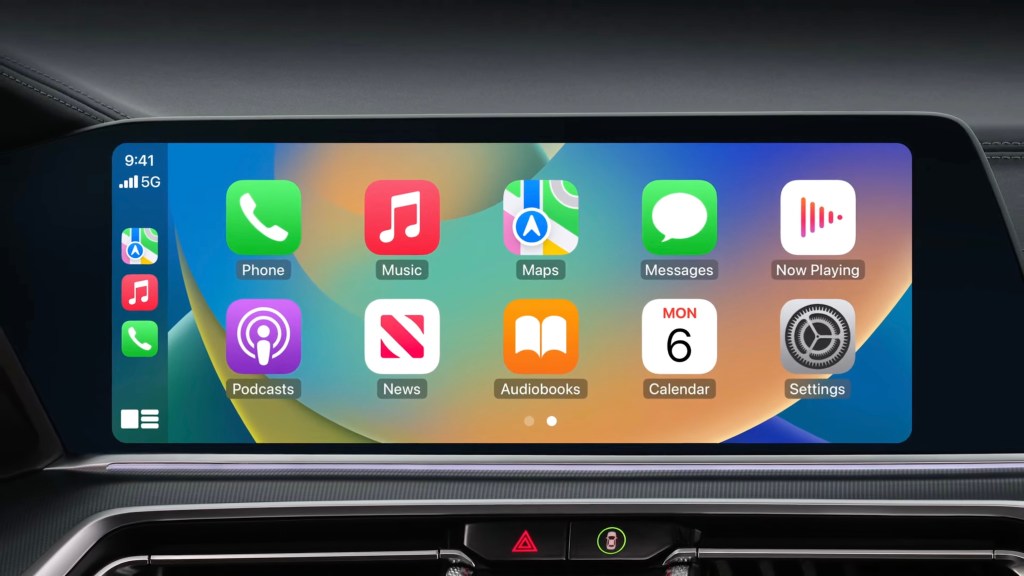
CarPlay sits on top of your car’s standard infotainment system, and enables you to access a small selection of apps. You can jump into Music, Messages, Phone, and Maps, just to name a few. By opening these straight on your car’s display, it eliminates any temptation to touch your phone while driving. As you’d expect, you can also take calls, reply to messages, and use Siri via CarPlay.
Since the software is essentially an app dialled up to eleven, you’ll need to trudge your way back through the car’s software for any vehicle settings or maintenance info. CarPlay is the most popular in-car software, beating Android Auto (the Android alternative) and standard manufacturer software. Apple claims 99% of cars in the US support CarPlay (not quite so many in the UK), and that 79% of Americans wouldn’t buy a car without it. We’re not quite sure how true this is, but we’re big fans nonetheless.
All the new CarPlay features coming soon
Like we mentioned, is planning a complete redesign of CarPlay from the ground up. And when we say a complete redesign, we mean every bell and whistle. The biggest difference between CarPlay in its current version and the new one is how it takes over your car. Rather than working alongside the existing software in your car, the new and improved version of CarPlay replaces it entirely (the software, not your car… yet).
In addition to the CarPlay apps, Apple’s software experience extends to all other displays in the car. This includes the dashboard, and any extended dashboards (such as the one in Mercedes cars). Apple didn’t mention if displays in the rear of the car would be supported – but these aren’t all that commonplace just yet.
Yep, you heard right. Apple is revamping the dashboard with its custom-designed speedometers, dials, petrol gauges, and range indicators. You’ll also be able to put widgets on the dashboard, such as the weather, or opt for traditional driver stats. On longer dashboards, Apple will let you add additional widgets, see more in-depth trip info, and control your music. With all that extra screen real estate, you might as well take advantage of it all! All driving-specific data gets delivered by the car’s sensors, even as your iPhone runs the apps. Your phone does not store or track the vehicle-sourced information.

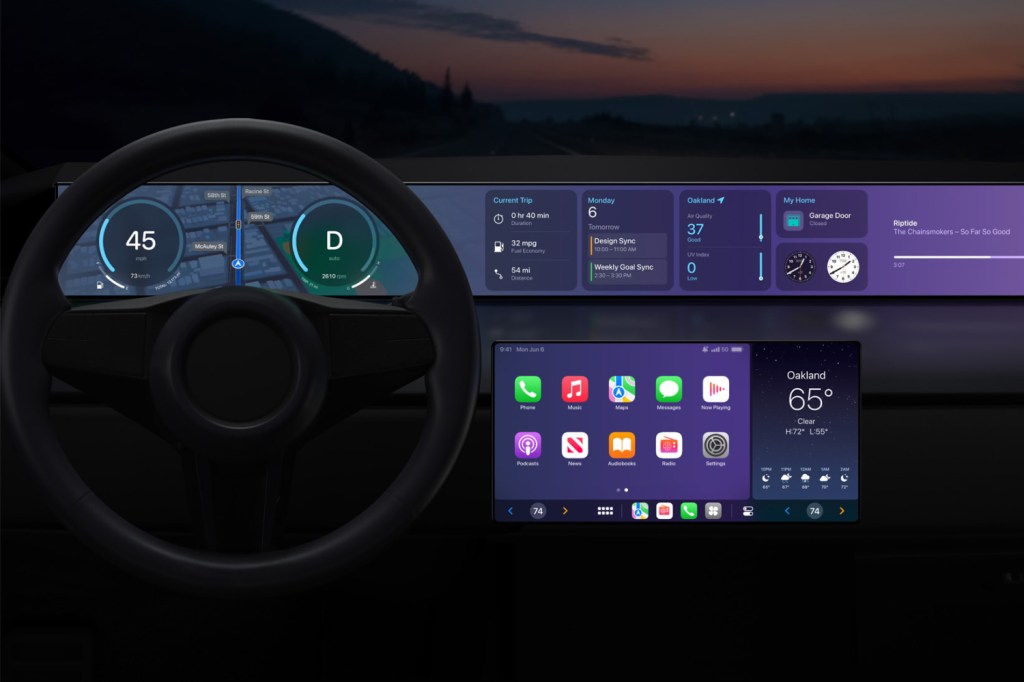
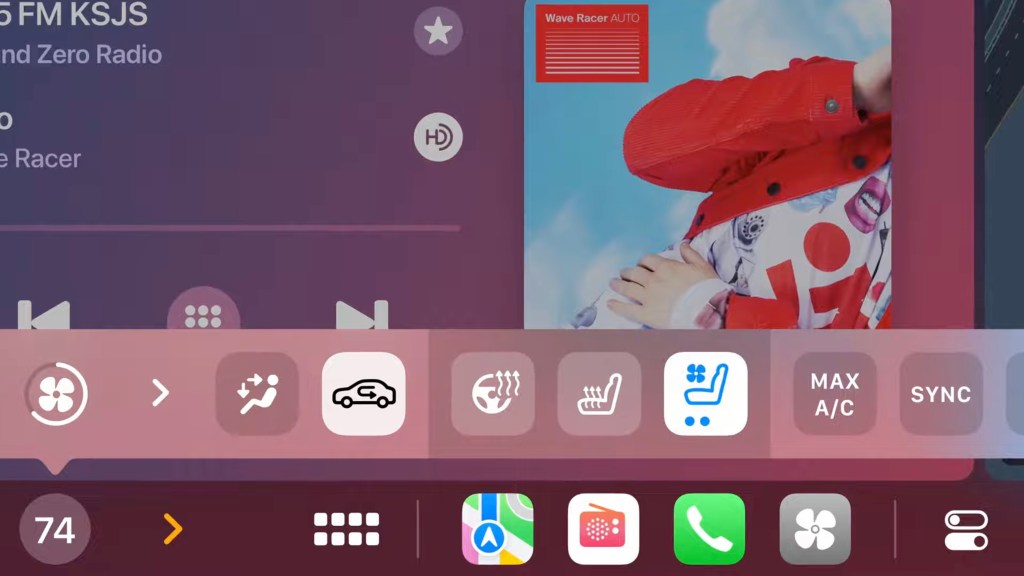
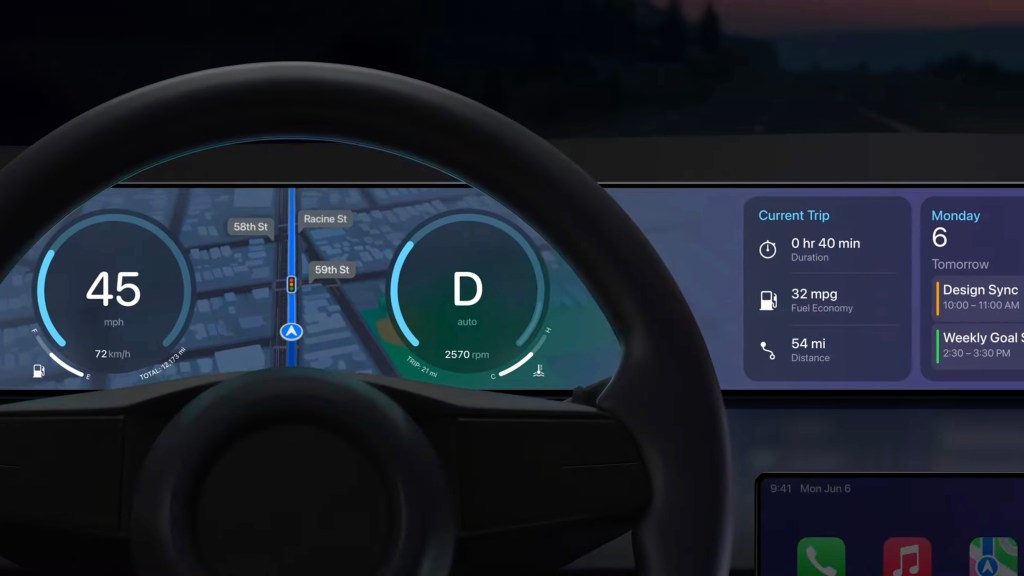
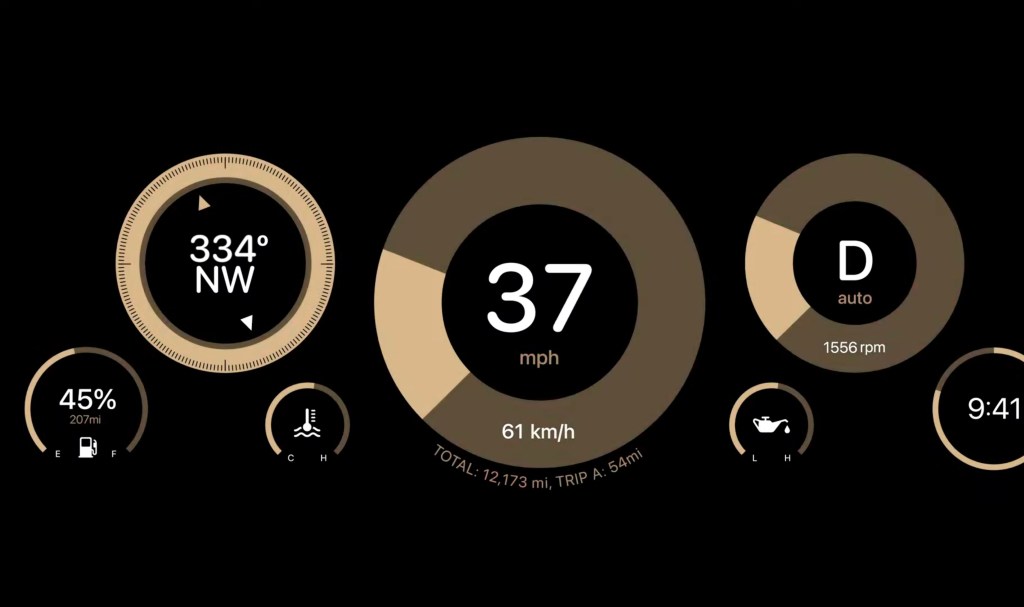


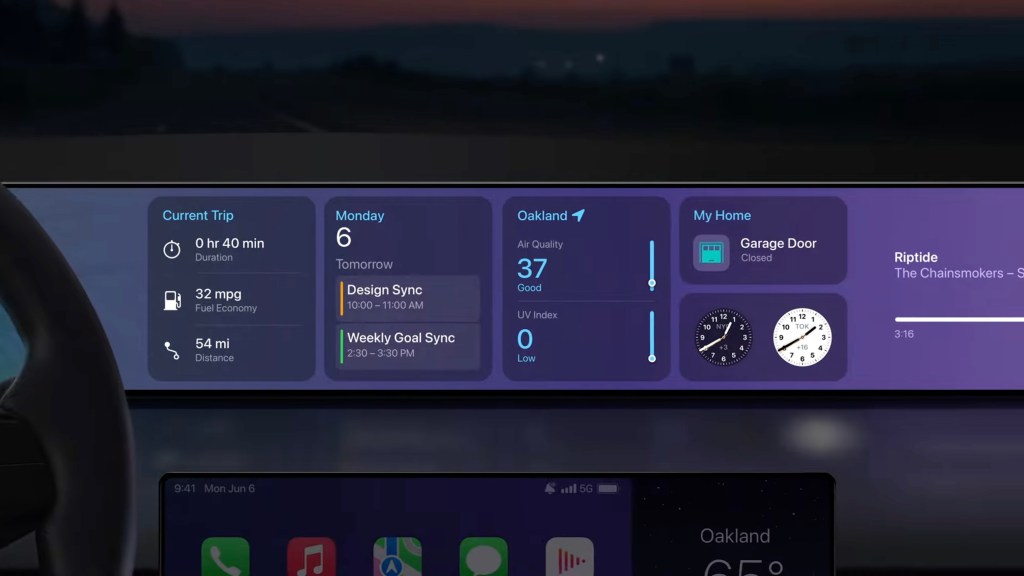

Most notably, since the revamped CarPlay replaces the entire car’s software, you can control the car through it. You’ll be able to adjust the climate, switch on the heated seats, play the FM radio, and more – just like you’d expect from the standard software in a car. The best part? It’s all still within CarPlay, so you don’t have to exit the interface, and Apple’s design carries forward. Apple wants to create a more familiar experience in the car with the new CarPlay, reminding you of your phone.
SharePlay is also on the way to CarPlay. Rather than sharing content via FaceTime, other iPhone users will be able to play music and other audio content directly through the car. Only the driver’s phone needs to be connected, with a prompt automatically appearing on passengers’ iPhones. This new functionality will work perfectly with Apple Music’s Collaborative Playlists introduced in iOS 17.
Apple was aiming for a launch at the end of 2023, with an announcement on the car models that will support it. We got said announcement – Porsche and Aston Martin will be the first brands to ship the next-gen CarPlay. The bad news? It won’t start actually rolling out until 2024.
The tech giant already explained which automakers would support the revamped CarPlay. The list includes Ford, Lincoln, Mercedes-Benz, Infiniti, Honda, Acura, Jaguar, Land Rover, Audi, Nissan, Volvo, Porsche, Polestar, and mentioned that more would be added.
BMW was a notable exception, having supported CarPlay for years, and working with the new CarKey feature. Don’t expect Tesla to appear on the list either, as it uses its own software (which is fairly good, as you might have heard).
Did somebody mention problems? When to expect Apple’s new CarPlay
While Apple was targeting a release in 2023, it didn’t quite make that deadline. When announcing the first brands to ship the new software, Apple noted that it wouldn’t start rolling out until 2024. It’s a year later than we first expected, unfortunately.
And that’s not the only problem. Remember how BMW won’t support the redesigned CarPlay? That’s because the automaker flat-out decided not to allow the software to take over the entire car’s system. Instead, the brand wants you to use its own iDrive 9 system. Fortunately, the current version of CarPlay will keep support going in the future. But we wouldn’t be surprised if other automakers decide to kick up a fuss as well, favouring their own in-car software – however rubbish it may be.
Could this cause further delays to the roll-out of Apple’s new CarPlay? Potentially, but probably not. Just like during the WWDC demo, Apple seems perfectly happy to have some car brands excluded from the software. If anyone else joins the BMW hold-out club, Apple will most likely still launch the software without their support. Of course, manufacturers will also need to update their software to support the revamped CarPlay. So this could cause delays that are out of Apple’s hands.
We heard no CarPlay news at WWDC 2023, beyond SharePlay heading to the software. Since CarPlay piggybacks off your iPhone, we expected to see the software roll out as part of iOS 17. But with the announcement absent from Apple’s software event, it might have to come next year in iOS 18. In the past, Apple has announced additional features at its usual September event, alongside the new iPhone series. And with Apple’s new timeline, we could be waiting until the next major update for CarPlay to actually end up in your passenger seat.
CarPlay sets the stage for big software improvements in vehicles
When the revamped CarPlay in line with Apple’s new timeline, in-car software will look and feel very different. Car manufacturers have a reputation for less-than-great software (they are there to make the car, after all). So, CarPlay will improve that experience and plays nice with Apple’s ecosystem naturally. It’s a win for the car, and you.
With Apple taking the lead, car manufacturers will be able to take a step back from the software. Or at least continue at the current C-grade standard. Of course, cars will still need their own software for those with Android devices (we assume) or no smartphone at all. But it’s likely that automakers’ own software will get better, since they’ve now got Apple’s version to compete with.




0 Comments
If you have any doubts, Please let me know